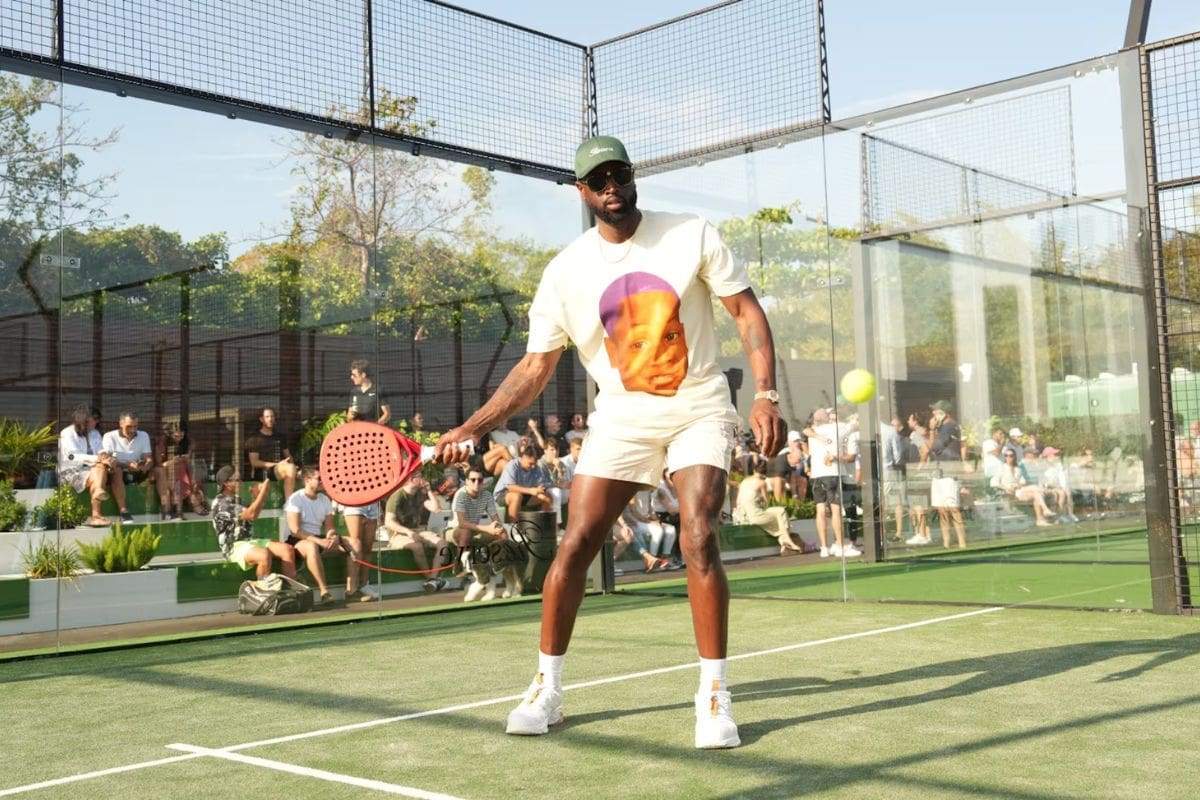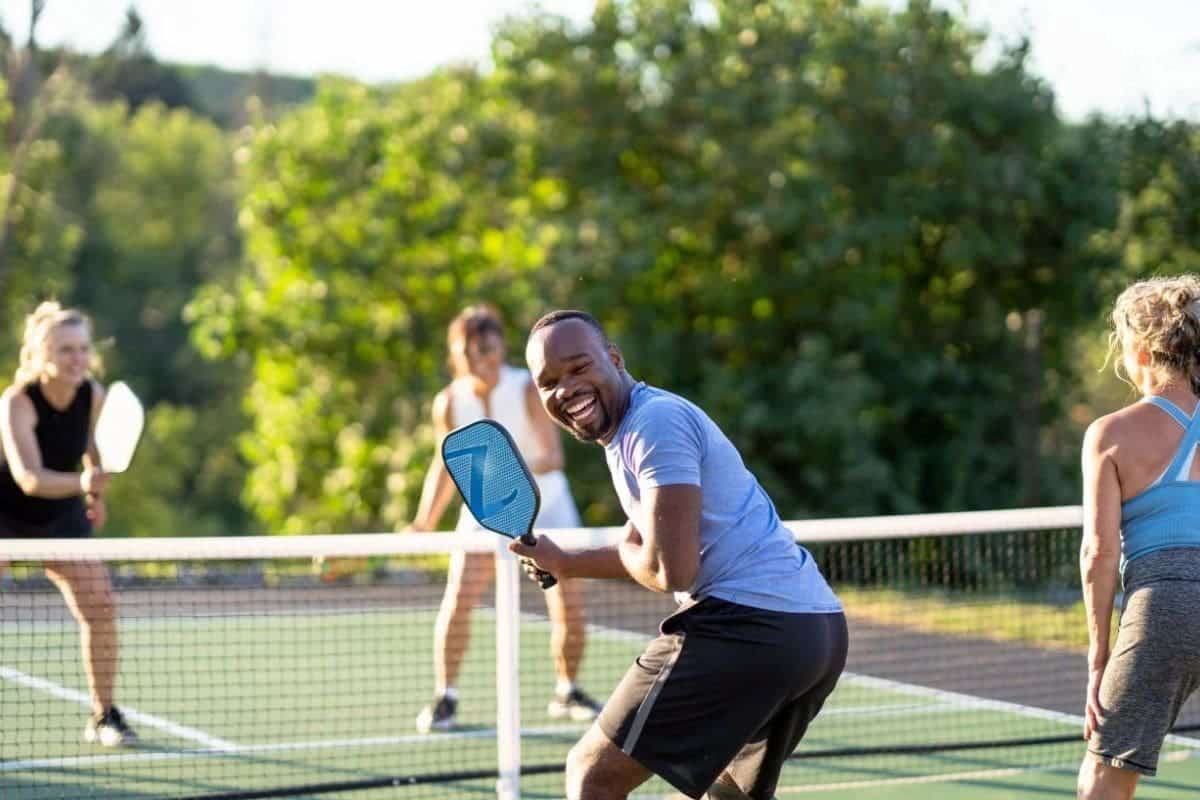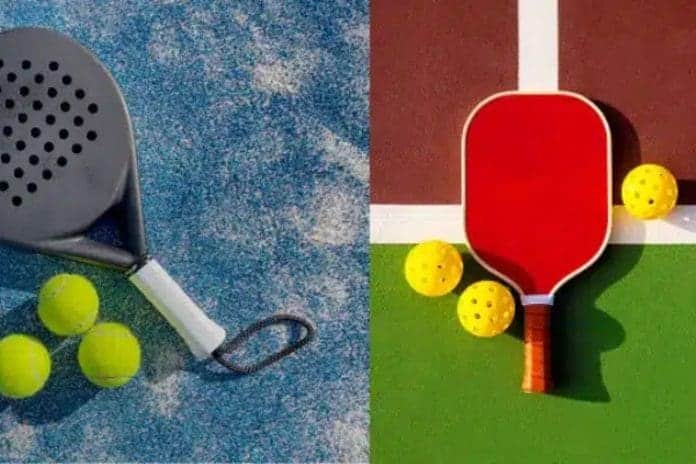Pickleball VS Padel: In the world of racquet sports, pickleball and padel are stealing the spotlight. Both sports are experiencing a surge in popularity, captivating players and spectators alike. Understanding their differences and similarities is crucial for anyone looking to join in on the fun.
The Basics of Pickleball
Pickleball is a fast-paced sport that combines elements of tennis, badminton, and table tennis. Played with solid-faced paddles and a lightweight plastic ball, pickleball is primarily enjoyed on hard courts, though it can also be played on clay or hardwood. The game is designed for optimal play on hard surfaces, where the ball bounces effectively.
Originating in the mid-1960s on Bainbridge Island, Washington, pickleball was created by three neighbors looking to entertain their children. Using household items like ping pong paddles and a whiffle ball, they transformed a badminton court into a new game. The whimsical name “pickleball” comes from the term “pickle boat” in crew racing.
Today, pickleball is most popular in the U.S. and Canada, with a growing global footprint in places like Australia, China, and Europe. Its accessibility and social nature appeal to players of all ages.
The Appeal of Padel
Padel, pronounced like “paddle,” offers a different flavor of racquet sport. Often described as tennis played within a squash court, padel uses solid-faced paddles and a specialized ball that is less pressurized than standard tennis balls. The enclosed court, complete with walls, adds a strategic layer, allowing players to utilize the walls during play.
Invented in 1969 by a Mexican businessman, padel began as an adaptation of platform tennis. It quickly gained popularity in Europe, particularly in Spain and South America, and is now supported by significant investments aimed at elevating its global profile.
Court Dimensions and Layout
One of the most striking differences lies in court dimensions. A standard pickleball court measures 20 by 44 feet, similar in size to an international badminton court. This compactness allows multiple pickleball courts to fit within a single tennis court. In contrast, a padel court is larger, approximately 66 by 33 feet, making it slightly smaller than a tennis court.
Pickleball courts have specific zones, including the “Non-Volley Zone” or “Kitchen,” which adds a strategic layer absent in the padel. This area prevents players from rushing the net and slamming balls while airborne, fostering a more patient style of play.
Service Rules
The service rules further differentiate these sports. In pickleball, players must serve underhand from behind the baseline with only one attempt allowed. Points can only be scored while serving, typically with games played to 11 or 15, creating a unique scoring dynamic.

Padel’s service resembles tennis, with players serving from a designated box and having two chances to deliver the ball. The scoring system mirrors tennis’s 15-30-40 format, providing familiarity for tennis players transitioning to padel.
Equipment Differences
The equipment also sets the sports apart. Pickleball paddles have evolved from wooden designs to composite materials that enhance spin and control, with different balls for indoor and outdoor play. Padel paddles, while similar in construction, are slightly longer and designed for dynamics specific to the enclosed court. Padel uses a unique ball with lower pressure, affecting play based on environmental conditions.
Player Demographics
Pickleball appeals greatly to tennis players, especially those who enjoy doubles and social play. Its lower athletic demands make it popular among retirees and former tennis players looking to stay active. Conversely, padel attracts those with backgrounds in racquetball or squash, who thrive in the enclosed environment and enjoy the strategic elements of play.
Common Traits
Despite their differences, pickleball and padel share several key traits. Both sports rely on groundstrokes and volleys, requiring a blend of power and finesse. Players frequently employ spin, enhancing the tactical complexity of their shots. Additionally, both sports feature an underhanded serve, emphasizing play over aggressive serving, which encourages strategic gameplay.
Prominent Tournaments
Both sports host prominent tournaments that draw thousands of participants each year. Key events for pickleball include the USA Pickleball Nationals and the US Open, while major padel tournaments feature the Padel World Championships and the Barcelona Master. These competitions not only showcase top talent but also foster community and growth within each sport.
As pickleball and padel continue to evolve, each sport brings its unique flavor to the racquet sports landscape. Whether you’re drawn to the quick exchanges of pickleball or the strategic depth of padel, both offer thrilling experiences that invite players to engage, compete, and enjoy. Ultimately, the choice between the two may come down to personal preference, but one thing is clear: the future of racquet sports looks bright, vibrant, and full of possibilities.

News in Brief: Pickleball VS Padel
Pickleball and padel are rapidly gaining popularity in the racquet sports scene, each offering unique experiences. Pickleball combines elements of tennis, badminton, and table tennis, played on a compact court (20 by 44 feet) with solid-faced paddles and a lightweight ball. Originating in the mid-1960s, it appeals to players of all ages due to its accessibility.
Padel, often described as tennis played in a squash court, features larger courts (66 by 33 feet) with walls that add strategic depth. Invented in 1969, it has gained traction in Europe and South America.
Both sports emphasize groundstrokes, volleys, and strategic play, featuring underhand serves. Major tournaments, such as the USA Pickleball Nationals and Padel World Championships, showcase top talent and foster community. Whether you prefer the fast-paced exchanges of pickleball or the strategic intricacies of padel, both sports offer exciting opportunities for engagement and competition.
ALSO READ: Garrett Coliseum Introduces 10 Indoor Pickleball courts

